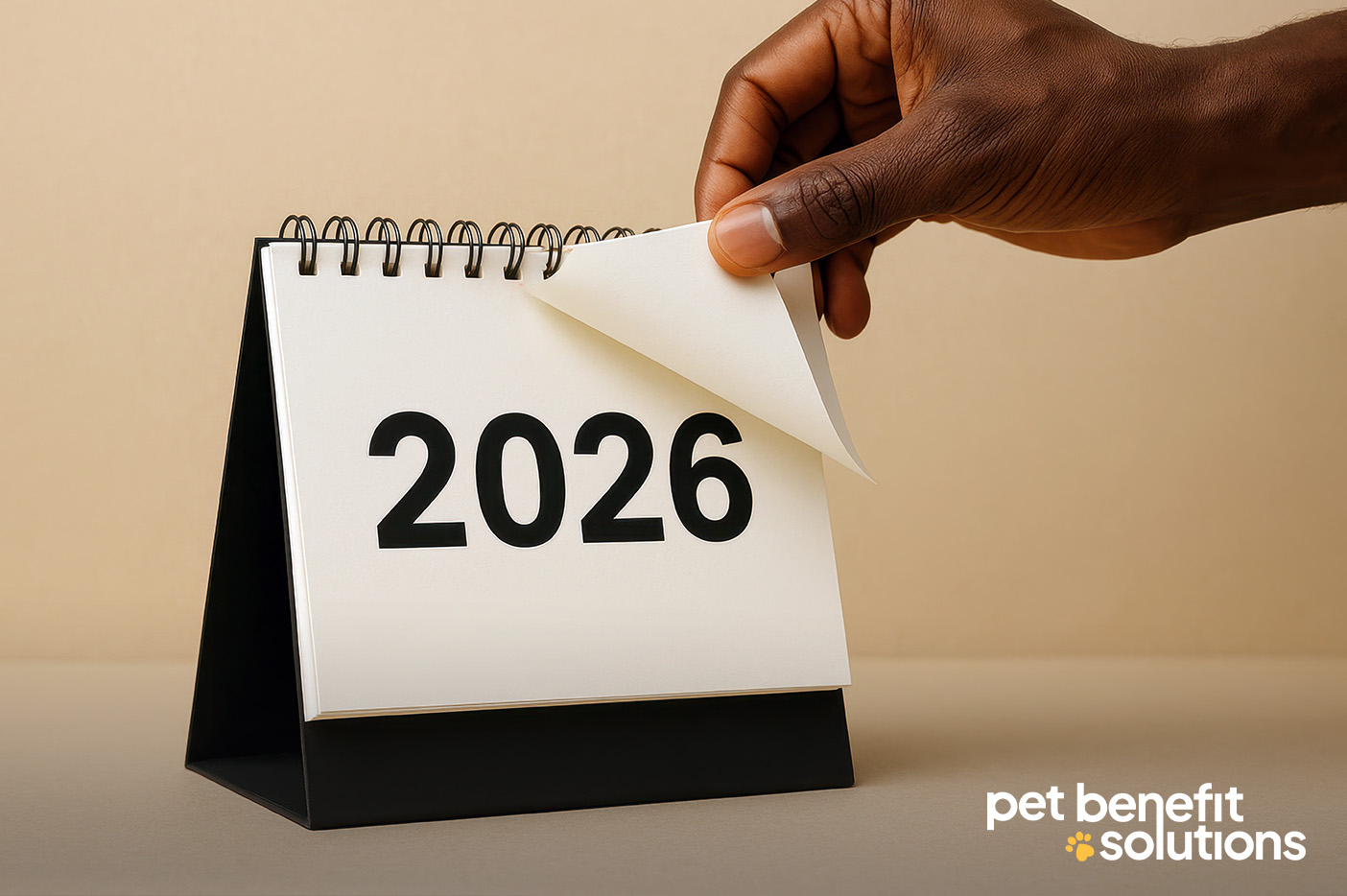
How to Effectively Utilize AI During Open Enrollment
From chatbots to recommendation engines, AI has great potential for streamlining Open Enrollment. Get tips on effective usage and potential risks as your team embraces this powerful new technology.
Open Enrollment (OE) is one of the most critical (and often overwhelming) periods in the employee benefits calendar. HR teams are flooded with questions, employees are struggling with an avalanche of choices, and everyone is trying to make the best decision in a limited amount of time. In such a chaotic scenario, AI has begun to prove its worth.
But as interest in AI for human resources grows, so do the questions:
“Can AI really improve employee engagement during enrollment?”
“Is AI really safe?”
“How can employers implement it effectively without compromising trust?”
This article explores the real-world potential of AI during Open Enrollment, the challenges to be aware of, and how HR teams can thoughtfully integrate this evolving technology to support employee satisfaction and smarter benefits decisions.
Why AI Is Gaining Momentum in Open Enrollment
From chatbots to recommendation engines, AI has rapidly evolved from a buzzword to a valuable workplace tool. For Open Enrollment, AI’s appeal is clear: it can simplify complexity, reduce administrative load, and personalize the experience for every employee.
According to Cascade AI’s 2024 report, HR and Total Rewards professionals are typically inundated with questions during OE, many of which are repetitive or basic in nature. Common employee questions include:
- “What is a deductible?”
- “How do I compare plans?”
- “What’s the best option if I’m expecting a child?”
These are valid questions, but when they come in all at once, HR teams can struggle to provide individualized support. With conversational AI tools, employees can get immediate answers, freeing up HR staff to focus on more complex or sensitive concerns.
This doesn’t only involve real-time Q&A. Modern AI tools can analyze employee demographics, past benefits usage, and upcoming life events (like marriage or parenthood) to suggest relevant plans and nudges. One benefits provider using AI reported a 50% reduction in time spent per enrollment session, dropping from 17 minutes to just eight.
Benefits of Using AI During OE
When implemented thoughtfully, AI can make a measurable difference for both employees and HR teams. Here are some of the main advantages:
Personalized Plan Recommendations
AI can sort through a company’s benefits options and match them to each employee’s life stage, medical needs, and financial goals. That’s especially useful for employees who default to the same plan year after year and often miss out on newer, better-suited options.
Conversational Guidance and Support
Instead of struggling with dense platforms, employees can ask questions in plain language and receive contextual, human-sounding answers. This format also allows them to ask sensitive questions (about fertility benefits, mental health support, etc.) without embarrassment.
Automated Nudges and Reminders
AI can deliver helpful enrollment nudges via email, text, or internal portals timed to when employees are most likely to take action. Messages might highlight an underused wellness benefit or remind pet owners about adding pet insurance to their package.
Reduced Pressure on HR
AI can handle the volume of FAQs and enrollment confusion, allowing HR professionals to prioritize high-touch interactions, resolve escalations, and strategize OE communications.
What to Watch Out For: Privacy, Accuracy, and Trust
Despite its advantages, using AI for open enrollment comes with real risks, particularly around data privacy and employee trust. If not implemented carefully, these tools can raise red flags.
Handling Sensitive Data
AI tools that analyze employee medical history, family status, or financial preferences must meet high standards of data protection. Even if a vendor claims to be secure, HR must verify how that data is stored, used, and encrypted.
*Tip: Choose AI platforms that are HIPAA-compliant or offer rigorous data governance structures. Ask vendors detailed questions about how employee data is anonymized or restricted.*
Overreliance on Automation
While AI can simplify, it’s not foolproof. Misinterpretations or overly broad recommendations can lead to poor plan choices. And if an employee feels their benefits decision was misinformed by a bot, that can lead to real dissatisfaction, or worse: liability.
*Tip: Use AI as a supplement, not a replacement. Always provide a way for employees to speak to a live HR rep or benefits counselor for complex or high-stakes questions.*
Employee Skepticism
Not everyone is ready to trust AI with their health or finances. Some employees may fear surveillance, data misuse, or feel overwhelmed by new interfaces.
*Tip: Clearly communicate what the AI tool can (and cannot) do. Emphasize transparency, control, and support. Adoption goes up when employees know they’re not being forced into automation.*
How to Responsibly Implement AI for HR
Here’s how HR leaders, benefits brokers, and employers can successfully bring AI into the OE process:
Start with a Focused Pilot
Instead of deploying AI across your entire benefits platform, start small. Ideally, you should start with a defined problem area like answering frequently asked questions or sending personalized enrollment nudges. Choose one department, location, or employee group as a test case.
Then, track metrics such as tool engagement, average time spent, and types of questions asked. Use these findings to make a case for broader rollout and to fine-tune the user experience before going company-wide.
Prioritize Inclusive Design
Make sure your AI tools are mobile-optimized so employees can access them anytime, anywhere, including shift workers or those without regular computer access.
If your workforce is multilingual, choose a platform that supports language preferences and cultural nuance in messaging. Also, test the tool with employees who have limited digital literacy to confirm it’s intuitive and easy to navigate. Provide a plain-language onboarding guide and, if possible, a live walkthrough demo.
Equip HR Teams for Support
Your HR staff should fully understand what the AI can do, and what it can’t. Provide a training session or internal FAQ that explains how the tool works, what data it uses (and doesn’t use), and when a human follow-up might be needed.
Encourage HR reps to proactively monitor the kinds of questions being asked through the AI to spot patterns or potential confusion in your benefits offerings. This not only improves support but also helps you refine your OE communication strategy.
Build a Feedback Loop
After OE, survey employees who used the AI tool, especially first-time users. Ask specific questions:
- Was the tool easy to use?
- Did it help you choose the right benefits?
- Would you prefer AI support again next year?
Combine survey responses with usage data (such as completion rates, time saved, abandoned sessions) to get a full picture. Use this feedback to improve messaging, adjust tool features, or offer additional guidance in the future.
Recommendations for Personalized Perks Like Pet Insurance
One powerful application of AI in employee benefits is identifying lifestyle-based add-ons, like pet benefits.
For pet owners, benefits like pet insurance or discount care plans can offer huge value but often go unnoticed in a crowded benefits lineup. AI tools can help surface these options by detecting relevant signals (such as employees searching for “vet care” or asking about dependent coverage for animals).
By helping employees discover lifestyle benefits that match their values, AI can boost employee satisfaction and increase participation in lesser-known but high-impact programs.
The Future of AI and Employee Benefits
AI isn’t going to replace your HR department, and it shouldn’t. But when used wisely, it can take pressure off your team, deliver faster answers to employees, and make sure more people make informed, confident decisions about their benefits.
In a season where clarity, trust, and timing are pivotal, AI can turn OE from a stressor into a strategic advantage.
Looking to offer voluntary benefits your employees will use and love?
Visit Pet Benefit Solutions to explore flexible, high-value options that integrate seamlessly into your Open Enrollment strategy.



